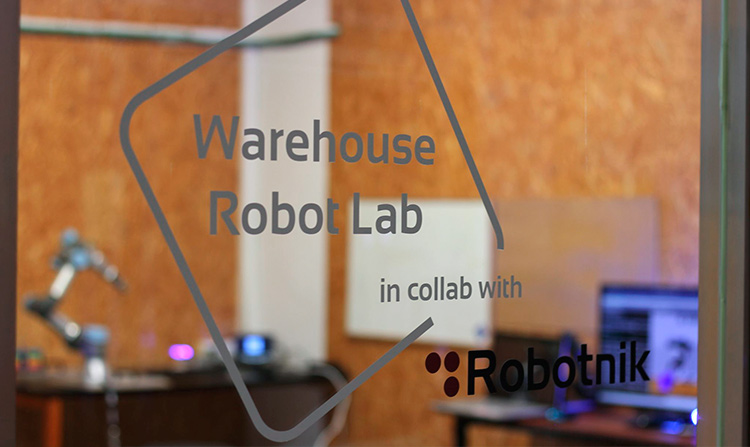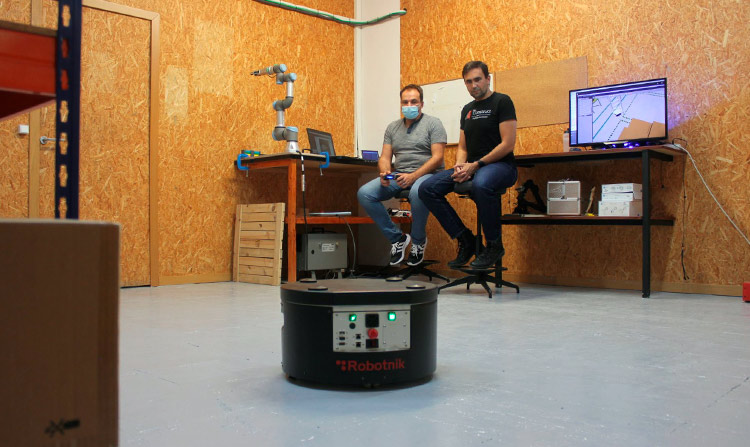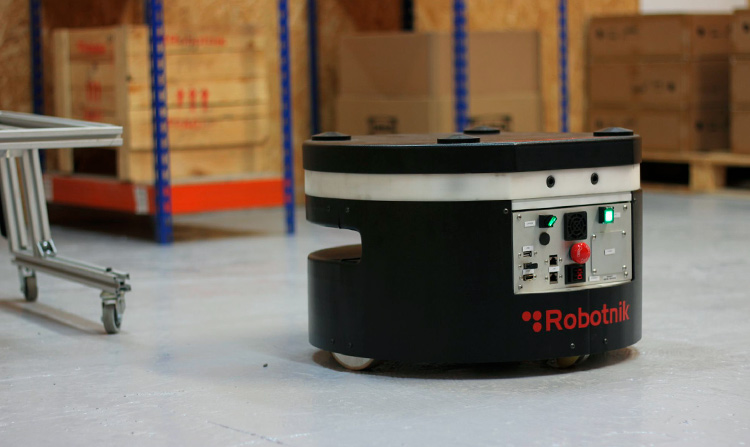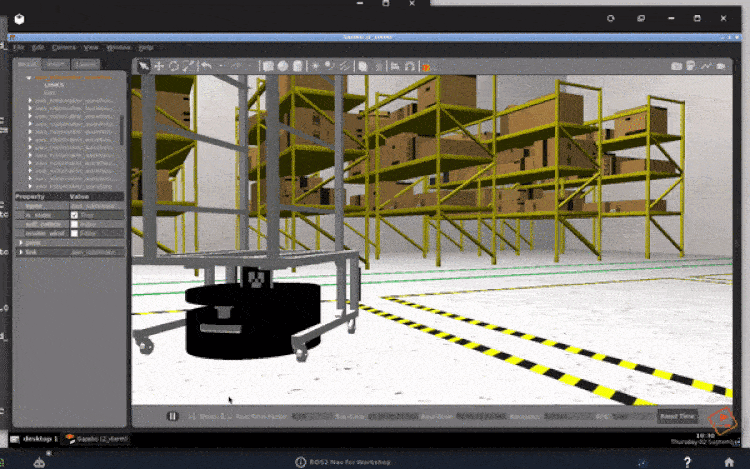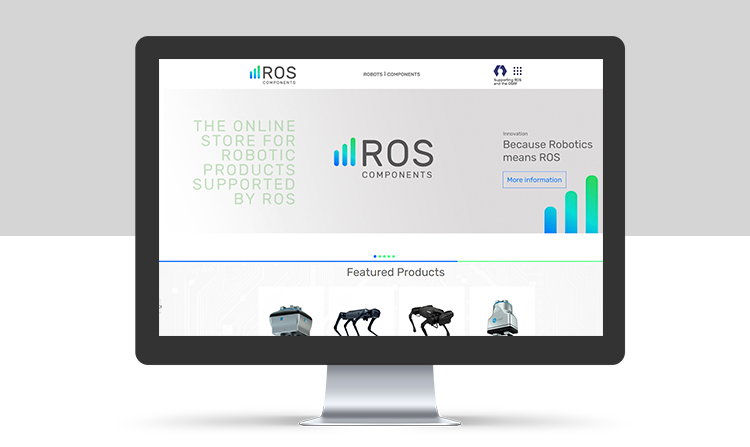If we talk about autonomous mobile robotics, it is essential to talk about ROS. The ROS framework has been one of the biggest breakthroughs in the robotics industry in recent years. The idea was to find a way to help the development of robotic applications, facilitating communication between sensors and algorithms, following the paradigm of “program once, test everywhere”.
Another new feature of this 2021 is the new remote warehouse lab in exclusive collaboration between The Construct and Robotnik. A lab that offers the possibility to learn ROS online, with both remote and on-site applications.
The Construct is the leading online academy for learning ROS development in robotics. This platform has traditionally operated by providing both online and face-to-face training around the world in simulation environments.
For Robotnik it is important that the training that followers receive is with real demonstrations, so it offers the academy free annual licenses so that ROS programming with some of the robots it manufactures – the SUMMIT-XL, for example – can be done not only in a simulated environment, but with testing in a real environment.
All of Robotnik’s robots support ROS software, and it has been working on robots for R&D for almost 20 years. These two aspects have led to a close relationship with The Construct since its inception, collaborating in different ways. Throughout this time, they have been able to count on some of Robotnik’s most outstanding robots, such as the RB-1BASE or the RB-KAIROS +, for their academic offerings.
New laboratory in collaboration with Robotnik and The Construct
Now they are launching a remote laboratory to complement the experience of their students in simulation with real robots, so that the training, although remote, has a part of real use of a robot.
The warehouse lab aims to teach how to program autonomous collaborative robots to help in warehouses, using both ROS1 and ROS2. Students first practice with a simulation of the environment and then remotely connect to real robots and practice what they have learned on these autonomous robots.
The main robot in the lab is Robotnik’s RB-1 BASE, plus a few others that are used as complementary tools. An example of this is the UR3 (from Universal Robots) with a gripper from OnRobot.
This robotic arm is necessary to have a real laboratory to help in warehouses, since the two basic tasks of these robots are to carry cargo from one place to another (task of the RB-1 BASE) and to be able to pick up objects and put them down where they belong (task of the manipulator robot).
Who is this remote laboratory aimed at?
The remote lab is only available to Enterprise customers. These are enterprise customers who want to set up their robotics sections or who want to keep their team up to date with the latest developments in robotics with ROS.
They are also often project researchers.
This means that is a high quality laboratory, whose training is aimed at people with a certain level of prior knowledge and experience in the robotics sector. Our special workshops (online and on-site) are also held in this laboratory.
But what is ROS?
ROS stands for Robot Operating System.
It is not exactly an operating system, but a set of open source software frameworks that allow hardware to be abstracted.
Before ROS existed, every time a user changed robots or acquired a different one, he or she had to learn to use new software. Today with ROS, it is possible to share programs, code and commonly used functions between different robots. It also facilitates integration between systems, which is more expensive if you change paradigms.
At the moment, ROS is available for Linux Ubuntu and Debian but is still in the experimental phase for Windows or macOS.
Robotnik is dedicated from the beginning to product development and provision of engineering and R&D services in service robotics. That is why it started working with ROS already from the first distribution released in 2010 (Box Turtle) knowing that it is and will be the standard in robotics for years to come.
In the last few years, ROS has established itself as the most widespread robotics framework worldwide. Every day more and more companies and institutions are opting to use ROS due to the facilities it offers, highlighting the possibility of using open source packages already created that allow the use of different components without the need to invest a large amount of time in the process.
However, the usefulness of ROS goes beyond the reuse of software created by the community. Being a middleware conceived from the beginning for use in robotics, it provides a set of tools that greatly facilitates the creation of a robust and coherent software architecture.
The software functionalities are distributed in the form of modular packages that can be added or removed without affecting the operation of the rest of the components of a robot. ROS provides different communication protocols between these packages, as well as tools to visualize and modify the robot’s behavior in a simple and intuitive way.
Another great advantage of using an open source framework with a large community behind it is that its users already have the necessary knowledge to use any type of robot whose architecture is based on the same system. In addition, the large number of users translates into the creation of a large number of open source components that are in a process of continuous improvement. Although the initial adoption of ROS was mainly in research centers, the maturity of the product has led to tremendous growth in the service and industrial robotics segments in recent years.
Due to the modular nature of ROS, its packages are under constant development to add enhancements, correct weaknesses, and adapt its operation to the current state of the art. To prevent its users from having to manually update each package, exposing them to problems and incompatibilities, ROS has a versioning system that provides an up-to-date and functional set of packages. Each version is designed for use on a different Ubuntu distribution and has up to 5 years of support from its release. The versions with active support at the moment are Melodic and Noetic, with Melodic being the most widespread distribution at the moment.
The large adoption of ROS in recent years for use in robots of all types, together with the advancement of technology since its release in 2007, has led to the emergence of new needs that were not taken into account during the initial design of the system. To avoid making drastic changes that would break compatibility with already established systems, it was decided to create a new system called ROS 2, the first official version of which was released at the end of 2017.
ROS 2 features a new decentralized architecture intended for use on systems with diverse features, and with native support for Ubuntu, OS X and Windows. Its advantages include greater control over the execution of each component, the possibility of integrating real-time systems, or its multi-robot approach that offers the possibility of adjusting the communication system for use in environments where communications are not ideal.
ROS 2 already has several years of adoption and constant improvements behind it, which has led to the release of LTS (long-term support) versions designed for stable use in all types of robotic systems. This has caused the industry to begin a migration process from ROS to ROS 2 that will extend over the next few years, and will significantly drive the evolution of the new system.
The store with ROS robots and component
The proof of this firm commitment by Robotnik is the creation of ROS Components, a portal for the sale of robotics products with ROS support.
Most of the robots and components on the market are supported in ROS, but sometimes it is not easy to find out which ones are, which version they support or how to purchase them. One of the main objectives of this store is to link the products with their drivers and/or software for ROS, detailing how to install and configure them and where to find tutorials or useful information, among other aspects. In the end, it’s all about making the user experience as easy as possible.
In addition to supporting the ROS community, whose core is maintained by the Open Source Robotics Foundation (OSRF) which is a non-profit organization in charge of developing new versions, as well as maintaining the necessary infrastructure for servers, etc., ROS Components aims to promote the use of ROS as well as its maintenance and growth.
Would you like a ROS video tutorial? A ROS demo? You can leave your opinion below in comments.
Subscribe to Robotnik’s newsletter to stay updated on the industry.


